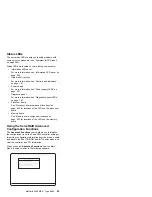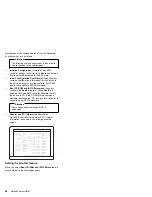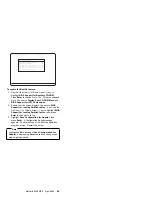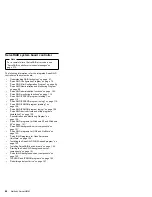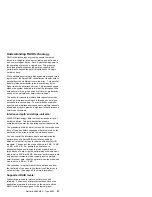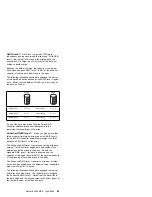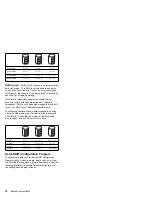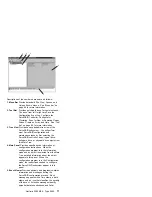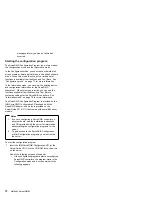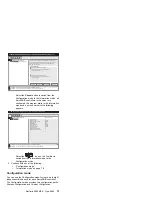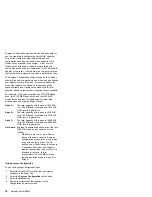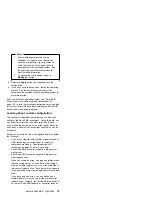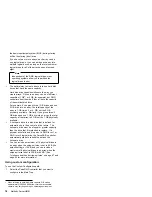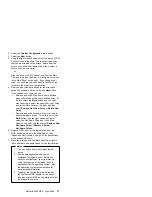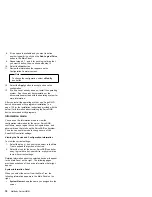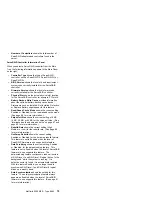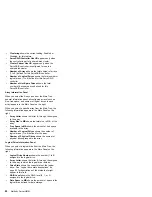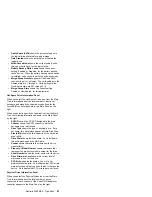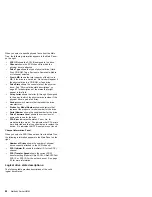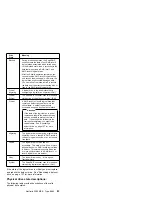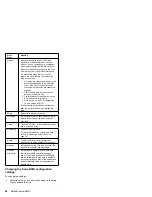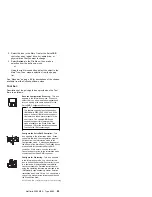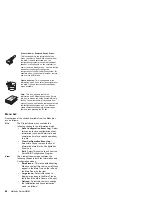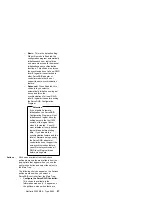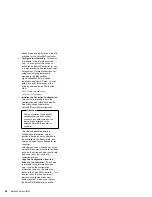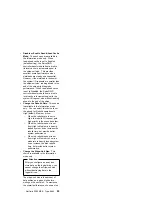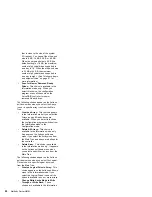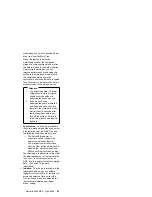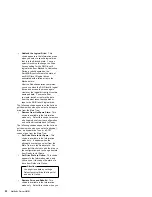
2. Select the Custom Configuration radio button.
3. Select the Next button.
4. Using the right mouse button, select the drive or SCSI
Channel icons in the Main Tree to select the drives
that you want to add to the arrays, delete from the
arrays, or define as hot-spare drives; then, select a
choice from the pop-up list.
OR
Drag the drive or SCSI Channel icon from the Main
Tree and drop it on the Array or Hot-Spare Drive icon
in the Main Panel on the right. If you change your
mind, you can drag the icons back to the Main Tree
to remove them from the configuration.
5. After you select the data drives for the arrays and
define the hot-spare drives, select the Next button.
If you change your mind, you can:
Remove a specific drive from a newly defined
array or delete an entire newly defined array. To
do this, select the Back button, use the right
mouse button to select the specific drive or Array
icon in the Main Panel on the right, and then
select Remove from New Array or Delete New
Array.
Remove a specific hot-spare drive or all newly
defined hot-spare drives. To do this, select the
Back button, use the right mouse button to
select the Hot-Spare Drive icon in the Main
Panel on the right, and then select Remove New
Hot-Spare Drive or Remove All New
Hot-Spare Drives.
6. Select a RAID level for the logical drive from the
RAID pull-down menu in the Main Panel. (See
“Supported RAID levels” on page 67 for descriptions
of the supported levels.)
7. Move the sliding bar in the Main Panel from right to
left to allot data and parity space for the logical drive.
Notes
1. You can define from one to eight logical
drives.
2. Some operating systems have size
limitations for logical drives. Before you
save the configuration, you might want to
verify that the size of the logical drive is
appropriate for the operating system. See
the operating system documentation for
more detailed information.
3. Typically, the first logical drive defined on
the first ServeRAID adapter or controller
found by system BIOS during startup will be
the startup (boot) drive.
Netfinity 5500 M20 - Type 8662
77
Summary of Contents for 866251Y - Netfinity 5500 M20
Page 2: ......
Page 8: ...vi Netfinity Server HMM...
Page 336: ...32 33 33 34 35 36 37 38 39 40 41 42 43 328 Netfinity Server HMM...
Page 346: ...338 Netfinity Server HMM...
Page 354: ...346 Netfinity Server HMM...
Page 355: ...Related service information 347...
Page 356: ...348 Netfinity Server HMM...
Page 357: ...Related service information 349...
Page 368: ...360 Netfinity Server HMM...
Page 369: ...Related service information 361...
Page 385: ......
Page 386: ...IBM Part Number 09N1015 Printed in U S A S37L 2 2 1...

